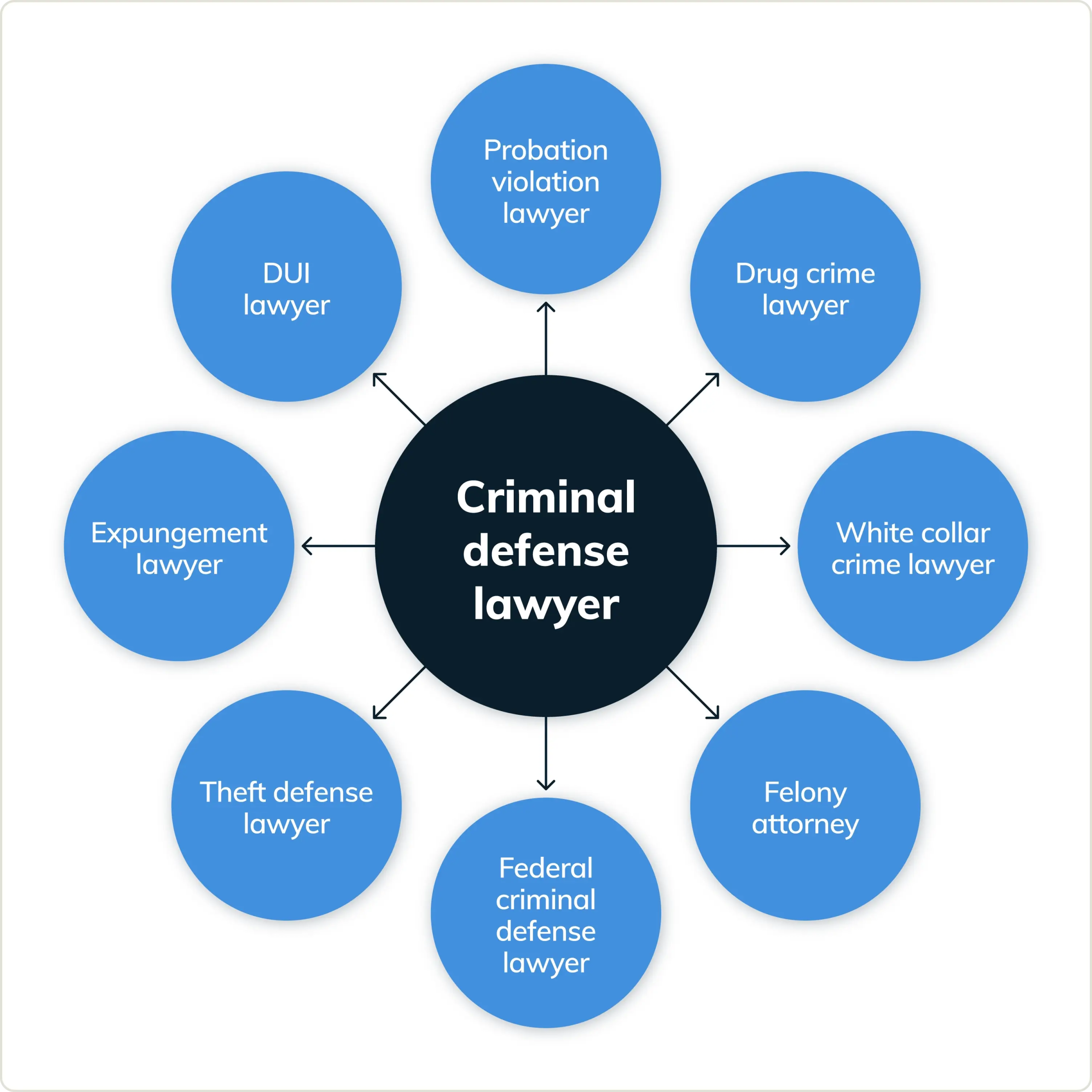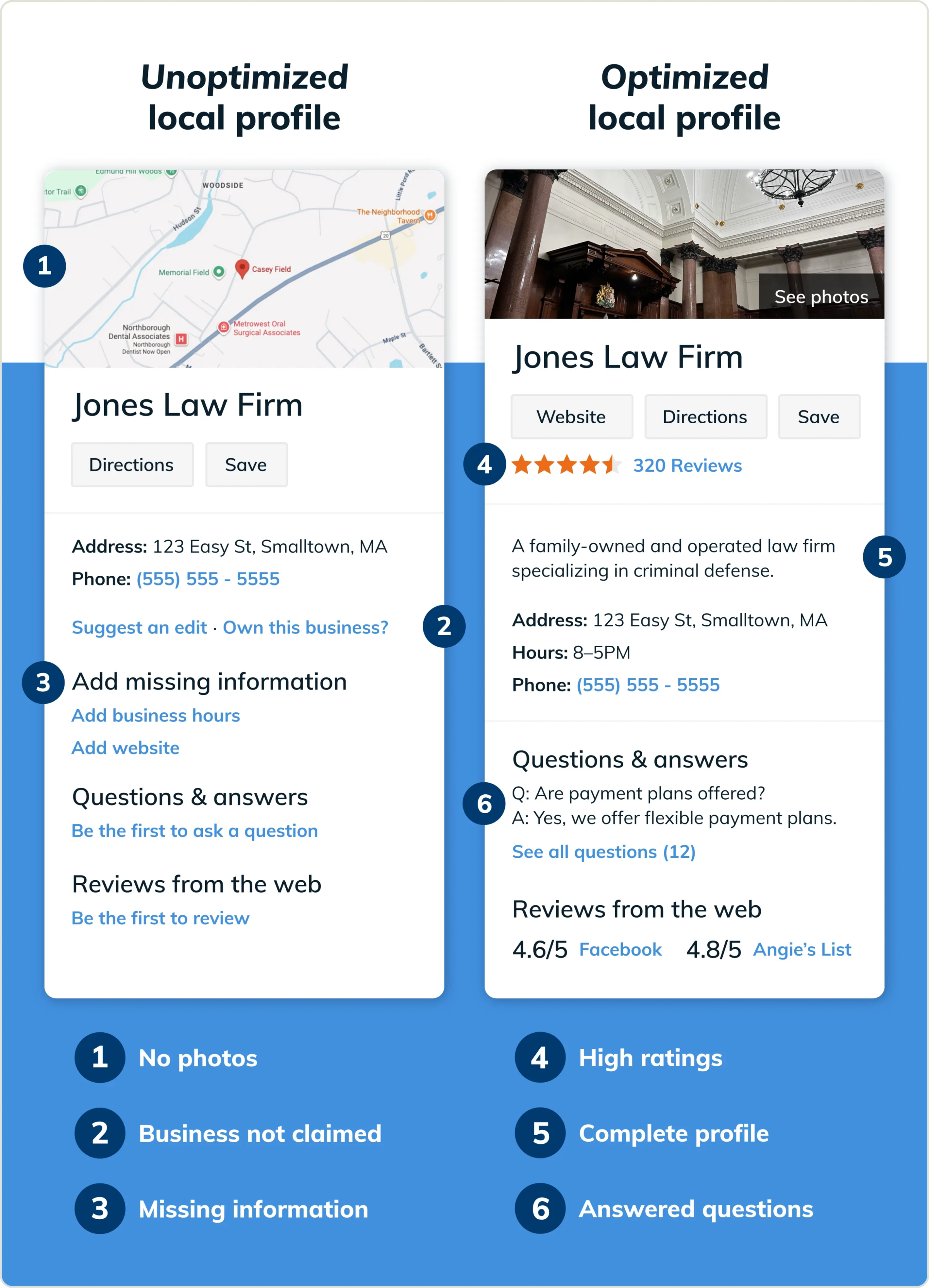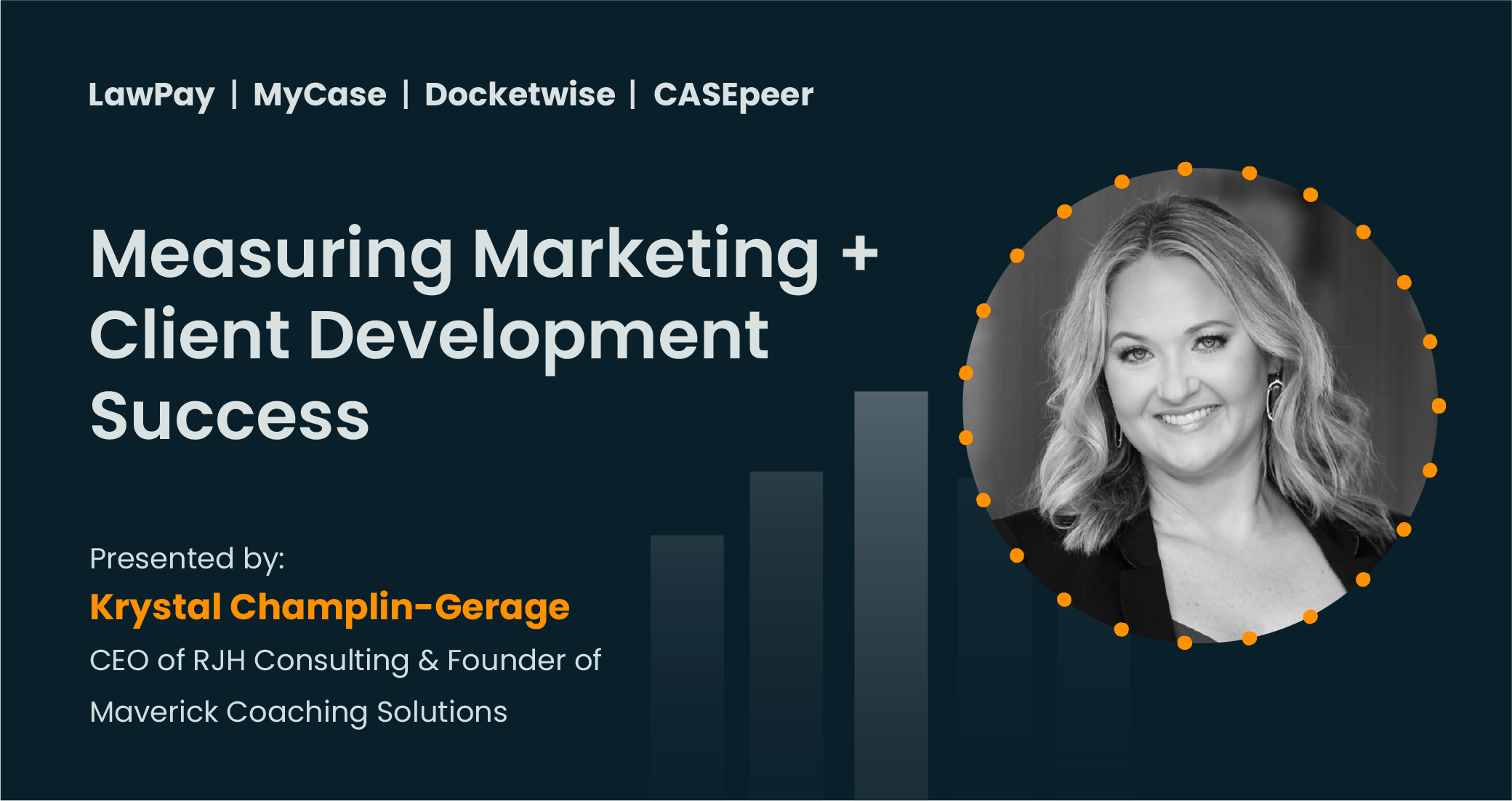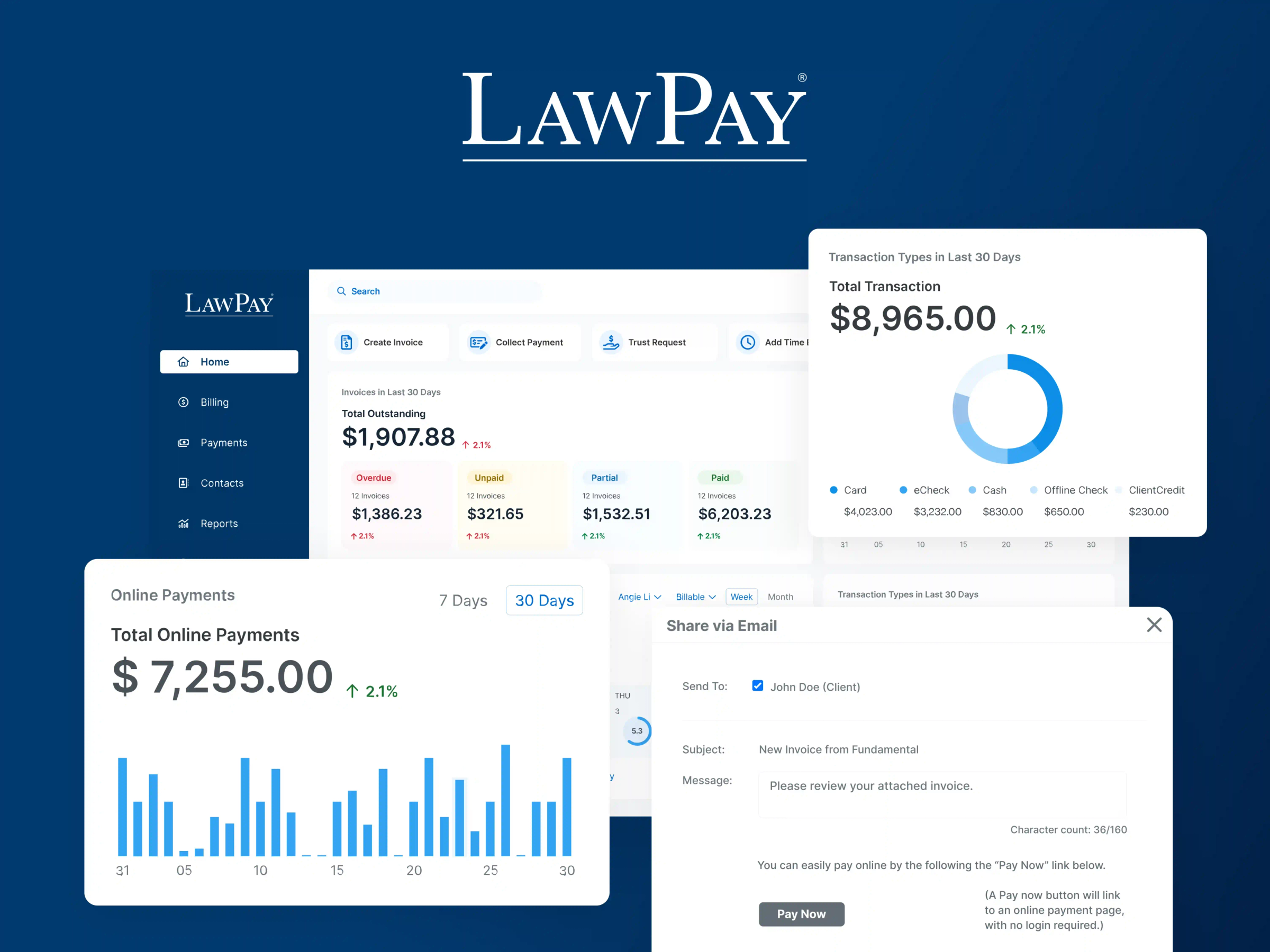Key takeaways
SEO is a process that helps lawyers improve their law firm website's visibility in search engine results.
An SEO program is essential for law firm marketing because people often use search engines to explore their options for legal representation.
When optimizing your website for SEO, test techniques, monitor results, and learn from the outcomes.
According to SEO platform Ahrefs, there are about 3,000 searches each month for the term "law firm near me.” Additionally, there are about 2,800 searches for "personal injury law firms near me" each month. Chances are, prospective clients review and research the first handful of law firm websites the search engine suggests. This is why SEO boosts your chances of showing up in those first searches.
Data from the 8am™ LawPay2023 Benchmark Report also confirms that Google was the highest lead source for law firms in 2023.
In this article, we'll cover the fundamentals of search engine optimization for lawyers. Use it to design a legal SEO strategy that will consistently deliver prospective clients to your law firm's website.
What does SEO mean for a law firm?
Search engine optimization, or SEO, is a set of practices designed to improve your law firm website's visibility in search engine results. SEO for lawyers is essential because people often use search engines to explore their options for legal representation.
Lead Referral Source | Total |
|---|---|
Google, generally | 51,664 |
Website | 42,658 |
Client Referral | 47,440 |
34,693 | |
Professional Referral | 19,242 |
Google Search | 13,473 |
Search, Other | 13,346 |
General referral | 12,199 |
Attorney referral | 10,288 |
Facebook Ads | 8,121 |
3,226 | |
Tiktok | 3,086 |
1. Keyword research, targeting, and optimization
The first step in SEO for lawyers is determining the right keywords to pursue. Keywords are the phrases people use to search for information online, such as “law firm near me” or “estate lawyers in Escondido.”
Keywords form the backbone of a legal search engine optimization program. Start by identifying keywords prospective clients search for when they have legal troubles. The most appropriate keywords for your strategy will describe the firm's legal services, specialties, and geographic areas served.
Keyword research tools
There are keyword research tools online that help you identify the most relevant phrases for lawyer SEO marketing. Free options are available on websites like Wordstream, Wordtracker, and Moz. To use them, enter a phrase to research.
The tool shares data on how often that keyword is used (or keyword volume) and how many other websites are targeting it.
You'll also get a list of related keywords, which you can use to make your content visible in more search queries and prove to search engines that your page covers the topic thoroughly.
Local and long-tail keywords
While it can be tempting to target only the highest-volume phrases, law firm marketers can also incorporate local phrases and long-tail keywords into their strategy.
Local keywords include references to a city or geographic area.
Long-tail keywords are specific, low-volume phrases. An example would be “real estate law firm near me free consultation.”
Relevant local and long-tail keywords are typically less competitive and higher-converting than broad, high-volume phrases. For this reason, they're an essential component of attorney SEO marketing.
Topic clusters
Topic clusters are groups of related content centered around a “pillar” topic and connected by internal links. This comprehensive coverage of relevant topics shows authority to search engines, which can help your firm rank higher.
To capture prospects when they’re ready to take action, you can identify and leverage high-intent keywords in each cluster. Doing this can help your firm show up higher on search results and improve your firm’s topical authority (how much a search engine perceives your site as an expert).

Keyword intent
Sometimes, a keyword phrase can be associated with different intents. An example is the phrase “what do personal injury lawyers do?” This could signal someone who's in the market for a lawyer, or it could be a college student researching career options.
Understanding user intent is an important aspect of selecting keywords to target. By misinterpreting intent, you may end up targeting keywords that are irrelevant to your business, wasting your law firm’s digital marketing resources.
To clarify keyword intent, search the phrase yourself and review the top results. For efficiency, do this before you commit to a list of targeted keywords. We have an example of this below.
Intent | Definition | Example |
|---|---|---|
Informational | The user is looking for definitions or answers to specific questions. | “What is a criminal law attorney?” |
Navigational | The user is searching for nearby services. | “Personal injury lawyer near me” |
Transactional | The user is ready to sign up or make a purchase. | “Fast legal representation for [case type]” |
Commercial | The user is comparing products or services. | “Best law firm for divorce” |
2. Quality content creation
Search engines reward websites that answer search questions thoroughly and practically. The path to success involves publishing legal content that is high-quality, informative, and engaging.
That process begins with a content plan shaped from your list of targeted keywords, plus what you know about your clientele. Strive to answer common legal questions, provide insights, and educate your audience.
Know that Google Search applies higher transparency and accuracy standards to content topics that may affect people's safety, welfare, and financial health. The search engine defines those sensitive topics as Your Money or Your Life (YMYL).
Law firm websites that address legal issues, such as DUIs and personal injury, are subject to these higher standards, making this important information for attorney SEO marketing.
Create key pages
Your best content plan should incorporate varying formats. Look to create and publish comprehensive and downloadable guides, blog posts, case studies, videos, testimonials, interviews, infographics, and FAQs.
Publish your content in search-friendly formats and consider including captions or a text transcript with videos. This provides more information to search engines and your website visitors who may prefer to read rather than watch.
Beyond different formats, it’s important to build out various pages on your website that serve unique purposes. Each page should target specific search intent and user needs so that potential clients can find exactly what they’re looking for. This, in turn, can help your page rank more effectively.
Search-engine optimized law firm websites include:
Service/practice area pages: Dedicated content about each practice area (for instance, personal injury or family law) that explains the service and targets related keywords
About page: Explains the story of your firm, organizational values, and attorney bios. This helps build credibility and trust.
Case studies or testimonials: Display past results or positive client experiences to offer social proof and reinforce your firm’s authority.
FAQ page: Answers common questions to improve the user experience and capture long-tail search queries.
Adding these pages builds a foundation for strong SEO but also a positive user experience for visitors.
Craft educational content for leads and clients
High-quality educational content helps foster trust with your potential clients while establishing your firm as a knowledgeable, reliable resource. This type of content addresses real client needs, increasing the chances of them finding you through search engines when they need legal assistance.
Educational or evergreen content is more efficient than news-driven or time-bound topics, as it remains relevant over time and is not seasonal, time-sensitive, or trending. Local content is also impactful, as it can drive traffic to your website for months or years and typically converts website visitors into clients at a higher rate.
When planning out website content, consider the topics your target clients are searching for and prioritize the subjects with the highest possible impact.
Educational content lawyers can create includes:
Local content relevant to the geographic area served by the firm, such as a blog post explaining how to proceed after a car accident in your specific city
Content answering a common question from clients, like a blog post answering “How Long Do I Have to File a Personal Injury Claim?”
Guides to legal processes, such as a step-by-step guide to probate in your state
Downloadable resources like checklists, templates, or FAQ documents that a prospect can save and reference as needed
Explainer videos that clarify legal concepts verbally
Build trust with E-E-A-T signals
The Experience, Expertise, Authoritativeness, and Trustworthiness (E-E-A-T) framework is a critical search engine ranking factor.
Google prioritizes sites that strongly demonstrate EEAT, and it’s even more crucial for law firms since incorrect or poor information can have a negative impact if users take it as legal advice.
Optimize for EEAT by showcasing your credibility and credentials throughout your site. That may include:
Adding attorney bios with qualifications and bar admissions, as well as notable case experience
Citing reputable sources and keeping information up-to-date
Highlighting reviews and case studies as social proof
Having a licensed attorney review all content for accuracy before publishing.
All of this will signal to search engines that you’re a reliable legal resource.
3. Local SEO for law firms
Most firms rely on local clientele to build their business. Local SEO targets prospective clients who are in the areas served by the firm. These prospects are easier to convert compared to those who are hundreds of miles away.
Below are four main elements of local SEO for lawyers:
Incorporate local keywords: These are search phrases that include a reference to a specific city, town, or locale, such as “divorce lawyer in Seattle.”
Add contact information on your website: Include your business name, address, and phone number. In SEO terms, these elements are called NAP; they should be consistent on all online locations, including listings and mentions in online business directories and the Chamber of Commerce. Remember to pay attention to the details on disclaimers, terms and conditions, and privacy policies, as these pages tend to be overlooked and can easily display outdated NAP information.
Sign up for a free Google Business profile: This provides verified information used by Google Search, Google Maps, and Google Reviews. The profile includes your firm’s name, address, phone number, and website. You can optionally add office hours, photos, and management responses to Google reviews.
Monitor reviews: Good user reviews support local SEO for lawyers by giving Google—and local prospects—positive signals about your business. Unfortunately, bad reviews can do the opposite. Proactively manage this by asking your most satisfied clients to write reviews.

4. Links, brand mentions, and reviews
Link building is the practice of securing links that point to the law firm's website. The quality, number, and relevance of incoming links are search ranking factors that can help lawyers bring in more clients.
How to start link building for lawyers:
Produce unique and useful content that other sites want to reference with a link. For example, you might host a survey and develop an interesting analysis from those survey results.
Join services like Qwoted and HARO to locate opportunities to provide expertise in exchange for a link.
Ask colleagues and vendors about linking opportunities, like being listed as a customer on a vendor’s website.
Seek out guest posting opportunities and content partnerships that allow you to include a link back to your firm's website.
Add your firm’s listing to local online directories.
Encourage happy clients to leave reviews of your firm, which builds positive online buzz about your organization.
Monitor unlinked mentions using tools like Buzzsumo or Google Alerts, then contact the website owner and ask them to hyperlink to your site.
The best bet for link building for lawyers is focusing on organic, content-driven linking opportunities like legal guides, case studies, expert commentary, or contributions to legal publications. These are better aligned with what Google rewards, as they frown on paid links and links from irrelevant or spammy websites.

5. On-page optimization
Search engines scan websites to understand and categorize their content, and the structural components of a webpage play an important role in this process. The critical components to know are title tags, meta descriptions, URLs, header tags, and alt tags.
Title tags
Title tags are a confirmed Google ranking factor that describes the webpage's overall subject matter. Best practices include keeping it between 55 and 65 characters and using your target keyword(s).
Example: New York, New York Family Lawyer Information
How search engines use this info: Search engine results show the page's title tags as the headlining phrase for each listing.
Meta descriptions
The meta description summarizes the page content in sentence form (155 characters or fewer), often appearing beneath the title tag in search engine results. A strong meta description is concise, engaging, and intriguing, inspiring the searcher to click to the firm's website.
If your target keyword is a question, aim to answer it directly because Google will sometimes bold the answer to a search query.
Example: [Law Firm Name] provides trusted legal services in [City]. From [practice area] to [other practice area], we fight for our clients. Call today.
How search engines use this info: The description appears beneath the title tag in search engine results, with the search keyword in bold
URLs
The page URL helps search engines understand the page’s content. For best results, include a targeted keyword in the URL, such as “yourwebsite.com/houston-criminal-defense-attorney” or “yourwebsite.com/practice-areas/personal-injury.” While there is no length limitation, shorter is better, as it’s easier for both search engines and humans to read.
Example: yourwebsite.com/practice-areas/personal-injury
How search engines use this info: The web address navigates to the website and helps search engines understand the page’s content
Header tags
Header tags are used within the content to denote information hierarchy, which helps search engines understand your content. The H1 or top-level header tag is most often assigned to the page’s main title, while H2 and H3 tags can be used to tag sub-headers. Not only are header tags important signals to search engines, they’re also critical for readers, as they break up long sections of text and allow readers to scan the page.
Example: Compassionate Family Law Attorneys in [City]
How search engines use this info: Header tags help search engines understand your content.
Alt tags
Alt tags are text descriptions of the images on a webpage, only showing on the screen when an image fails to load. Screen readers use alt tags to describe images to people with impaired vision. Alt tags inform search engines about the content of the page and drive image-related traffic to the website. Write alt tags as concisely as possible and limit them to no more than 125 characters. Include keywords if relevant to the image description.
Example: Injury lawyer reviewing accident case documents with a client.
How search engines use this info: Informs search engines about the content of the page and drives image-related traffic to the website
Internal links
Internal links connect one page of your firm’s website to another, helping users navigate your site and find information. Search engines use these to understand your site’s structure and determine the most valuable pages. Use descriptive anchor text—the clickable text of the link—and place links naturally. Don’t over-stuff by adding an excessive amount of links.
Example: We also handle child custody cases with care and compassion.
How search engines use this info: Get a feel for the structure of your site and determine the most valuable pages.
Try to avoid over-optimization like stuffing keywords into title tags, meta descriptions, headers, alt tags, or page content.
Instead, aim to be helpful, user-focused, and incorporate keywords and related phrases naturally.
6. Technical SEO and user experience
Technical SEO refers to what happens behind the scenes to help search engines crawl, index, and rank your pages. It’s important because even the best content won’t be visible to potential clients if search engines can’t access or “crawl” the page.
Start with a site audit to see if there are any issues with structure, speed, or security. Tools like SEMrush, Google Search Console, or Ahrefs can help you identify issues and determine improvements. Also, keep an eye on your site’s performance, broken links, and loading issues on both desktop and mobile.
Key elements of technical SEO for law firms include:
Site structure: A clear site hierarchy (the way your website is organized and structured) helps improve user navigation and ensure search engines accurately index your website.
Site speed: Pages that load quickly offer a better user experience and rank higher on search engines.
HTTPS/Security: Protect firm and client data by securing your site.
Crawlability: Make sure search engines can access all of your important pages. For example, fix any broken links.
Strategic keyword use: Optimize the URLs, titles, headers, and meta tags.
Addressing the technical SEO for law firms lets your firm produce a user-friendly site that will also perform well in search engine rankings.
Page experience
Effective law firm website design involves offering an intuitive, engaging, and interesting user experience (UX).
Both the overall organization of a website and the elements on a single webpage affect user experience. For example, a website with a logical menu and an intuitive information hierarchy is easier to navigate.
Consistent use of design elements also supports user confidence, as do confirmation messages. A simple example is displaying a "thank you" message after the user submits a web form. This prevents the frustration of wondering whether the submit button has worked.
Note that there are also technical aspects to good user experience. A big one is site speed, which is also a search ranking factor. Web pages should load quickly and completely on both desktop and mobile devices.
8am MyCase websites, offered as an add-on to MyCase customers, incorporate UX best practices by default. They also include client-friendly features like integrated intake forms and a secure communications portal. MyCase can manage the hosting and technical support for these websites.
Mobile optimization
Google primarily uses websites' mobile versions for evaluation and ranking. That means a law firm website without a functional, engaging mobile experience will struggle to generate SEO traffic. A strong mobile experience means users can easily scroll, navigate, and access your full website from their mobile device.
Responsive web design is the standard in today's world. A responsive website has one code base that includes multiple layouts appropriate for different screen sizes.
Schema markup
Schema markup is code that categorizes specific content on a website. Search engines use markup to display extra information, such as a business's review rating, in search results. The extra information draws more attention visually and potentially garners more visits. A higher click-through rate from search engines may lead to a boost in ranking.
Important schema types for a law firm search engine optimization program are:
Person schema: Includes tags to identify the attorney's name and bio, practice areas, and contact information, reviews and ratings, office locations, and social media profiles.
LegalService schema: Identifies the firm's name and description, geographic service area, contact information, office hours, and payment methods.
LocalBusiness schema: Highlights the firm's location, contact information, and office hours.
You can test and optimize schema markup for free with Google's Schema Markup Testing Tool.
7. Improve visibility and citations in large language models (LLMs)
Search engines are now using artificial intelligence and large language models to provide summarized answers and recommendations for search queries. This means that in addition to your ranking position, you'll also want to pay close attention to these AI-generated results.
That’s because these results often pull from authoritative and well-structured content. To increase your chances, maintain accurate and detailed content. Keep content up-to-date and as comprehensive as possible, and build authority across directories and other websites.
The SEO work you’re already doing can help here, too. Backlinks, technical SEO, and strong content can all improve your discoverability by AI/LLM.
How can law firms track and measure SEO success?
There are many opinions about how to optimize a law firm website for SEO, but ultimately, what works best is testing, monitoring results, and learning from the outcomes. That process requires the use of search analytics tools, legal analytics software, and key performance indicators (KPIs).
Top free SEO analytics tools include:
Google Search Console (GSC): See the search phrases that drive users to the website as well as data on website indexing, mobile friendliness, and site speed.
Google Analytics: Tracks website views, user engagement, referral sources, conversions, and much more.
Bing Webmaster Tools: Bing's version of GSC shares search phrases for your website and also has a site audit tool that scans for technical errors.
PageSpeed Insights: Enter a URL in this tool to get a complete report on the webpage's performance along with recommendations for improvements.
Microsoft Clarity: Provides heatmaps and session recordings for websites. Heatmaps are visualizations of where visitors click on webpages and can highlight design issues causing negative user experiences. Session recordings show how website visitors navigate from page to page.
These tools provide a lot of data that can be overwhelming to review and evaluate, so a KPI dashboard within Google Analytics or a third-party tool is an essential tool for law firm SEO. A good KPI dashboard gives you a quick snapshot of how the website is performing against high-level metrics.
SEO KPIs for lawyers
Tracking the right metrics is imperative for your firm’s SEO success. Without measuring your performance, you won’t know what’s working, where you can make improvements, or how reliably your efforts are bringing in prospective clients.
Key SEO KPIs for lawyers include:
Website visits: The number of users who visit your site over a given period; a higher number points to good search visibility
Traffic sources: Where visitors come from, whether that’s organic search, social media, referrals, paid ads, or somewhere else. This lets you focus on your strongest-performing channels.
Average time on page: How long, on average, users spend on a page; longer times suggest more engaging or relevant content
Average page views per session: How many pages a user visits during a single browsing session
Number of leads generated: How many inquiries or form submissions come in from your website; this directly ties your SEO efforts to pipeline growth
Rate at which website visitors convert to leads: The percentage of site visitors who turn into leads; tracking this helps you evaluate the quality of your traffic and the effectiveness of your CTAs
Links: The number and quality of websites linking back to your site
Domain authority: A score (usually 1-100) predicting how likely your site is to rank compared to competitors; a higher score correlates with stronger SEO
Rankings: Where your sites appear in search results for specific keywords; the higher you rank, the better

Should lawyers do SEO on their own?
You can save money and exercise more control by handling your SEO in-house, but it’s often beneficial to hire outside experts.
Outsourcing SEO gives you expertise, strategy, and time savings. But those benefits can come at a high cost.
A great middle ground option is to handle simpler SEO work yourself, while outsourcing some of the more time-intensive or technical work to an expert. You can also investigate tools that offer AI marketing for law firms, as they can handle some of the simpler SEO tasks.
Pros | Cons |
|---|---|
Less expensive | High learning curve |
More control | Time intensive |
Learn useful SEO skills | May not interest you |
How to find and vet outside SEO help
If you’re interested in bringing in outside SEO expertise, it’s important to do your due diligence to ensure you get the support you need with the results you want. When deciding to hire help, keep the following in mind:
Ask colleagues for referrals from their network
Review the SEO consultant or company’s case studies, particularly those most relevant to your firm
Inquire about how they’ll measure the success of your firm’s SEO efforts
Discuss the best cadence for communication and reporting
Check references to hear from other clients
MyCase offers website design services that handle SEO for you, giving you an all-in-one website creation and SEO platform.
How can lawyers stay updated on SEO trends in the legal industry?
Google Search, which dominates the search landscape with 89% market share, implements several major algorithm updates annually. The algorithm is the set of rules that dictates which websites appear in search results. Each algorithm update can add another layer of complexity to your law firm SEO strategy. Staying current on those changes helps you maintain the website's prominence online.
Here are some tips to help you stay updated on legal SEO trends:
Subscribe to one or two reputable SEO newsletters, such as those offered by Search Engine Land, and follow Google’s Search Central blog, social media accounts of SEO experts, and industry-specific forums or communities.
Attend relevant conferences or webinars, such as those focused on law firm marketing or marketing for small businesses.
When you hear of SEO updates, check your site's performance in Google Analytics and Google Search Console. If the site's average position for important keywords has dropped, research the nature of the changes.
Keep an eye on competitor activity using tools like Ahrefs or SEMrush to see what is working for those in the same space.
Look at local SEO trends, such as updates to Google Business profiles or local ranking factors.
When you encounter algorithm updates or changes to SEO best practices, resist the urge to make drastic adjustments. Instead, do an SEO health check and ask yourself:
Are there key technical or UX issues that need to be resolved?
Is your content serving your audience's search intent?
Then, try to focus on incremental improvements. The goal of your website is to bring new clients into the firm. At a minimum, improved user engagement makes that process more efficient. It's also likely to benefit the site's SEO performance.
Enjoy more efficient legal workflows with LawPay
Running a law firm search engine optimization program is resource-intensive. The key is to make sure your processes are efficient and can help you improve search traffic and user engagement over time.
For further efficiencies, LawPay can help your firm get paid faster and more securely. Clients love LawPay's range of payment options, from eCheck payments to legal fee financing. Plus, all payments are handled in compliance with IOLTA and ABA guidelines. LawPay also adds more efficiency with in-platform time-tracking, invoice creation, and digital billing.
Learn more about how MyCase and LawPay can centralize marketing, billing, and support your firm’s health and growth over time. Sign up today to start getting paid faster.
Schedule a demo to see what LawPay can offer your firm.
Book Now
FAQ about SEO for lawyers
About the author

Justin FisherContent Writer
Justin Fisher is a content writer and SEO strategist for leading legal software companies, including MyCase, Docketwise, and CASEpeer, as well as LawPay, the #1 legal payment processor. He specializes in writing about emerging legal technology, financial wellness for law firms, and more.
